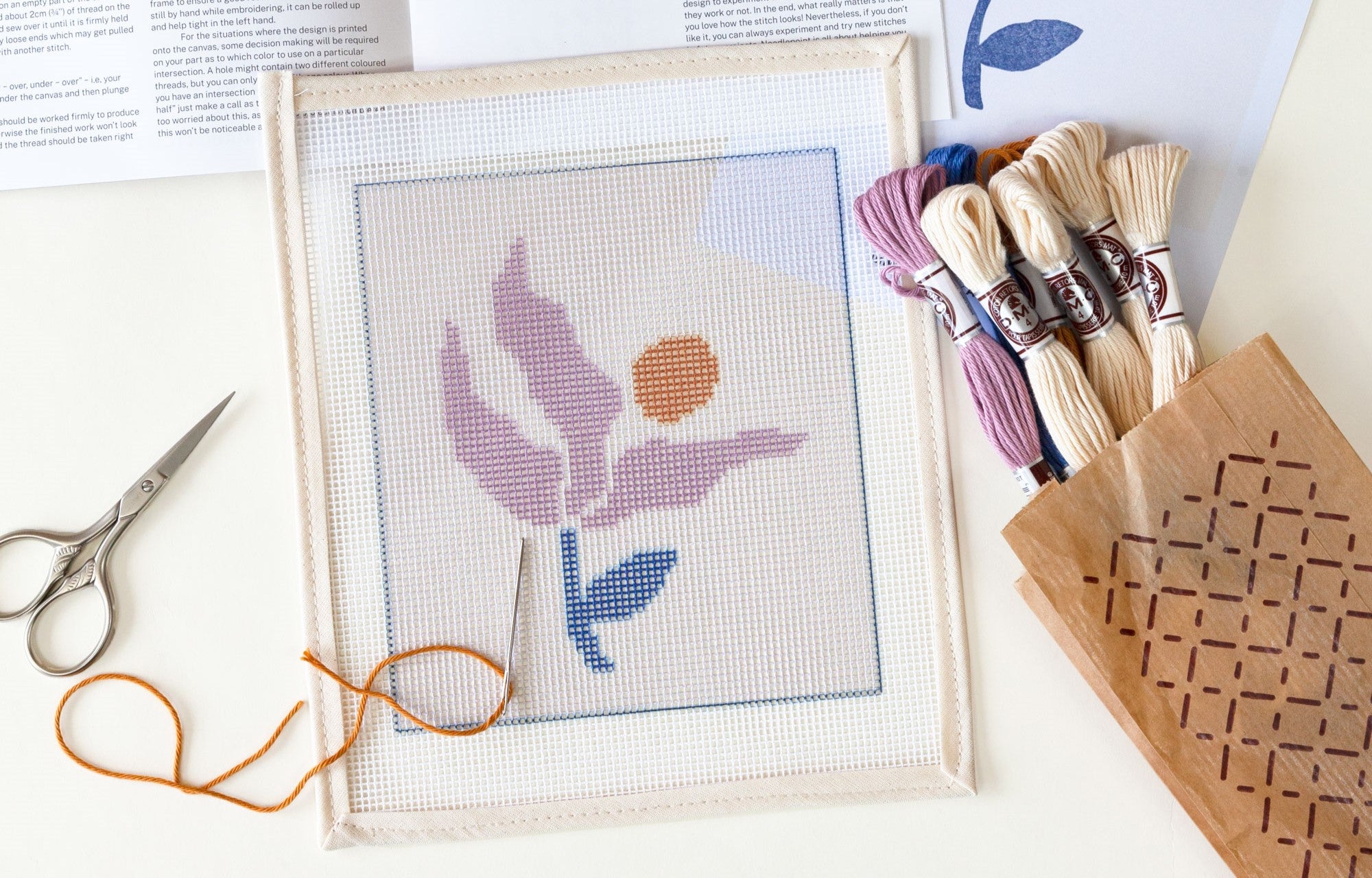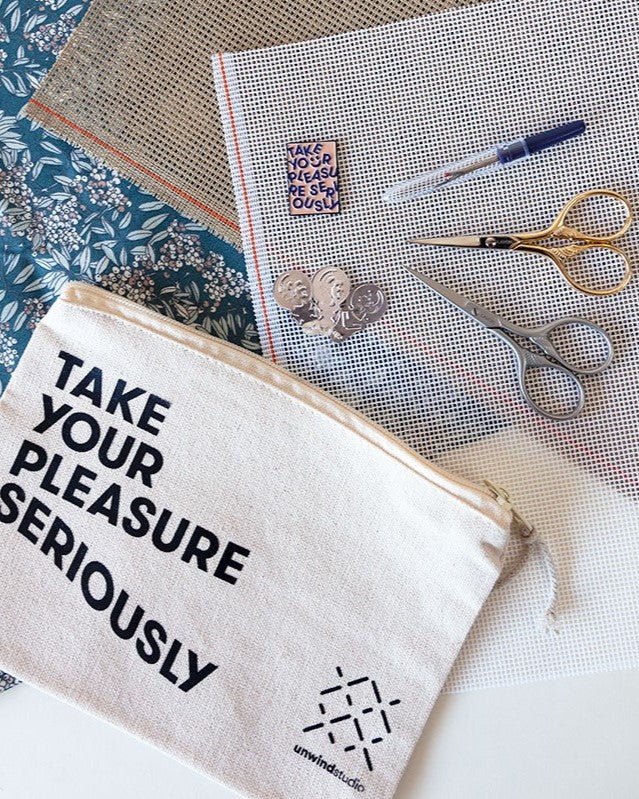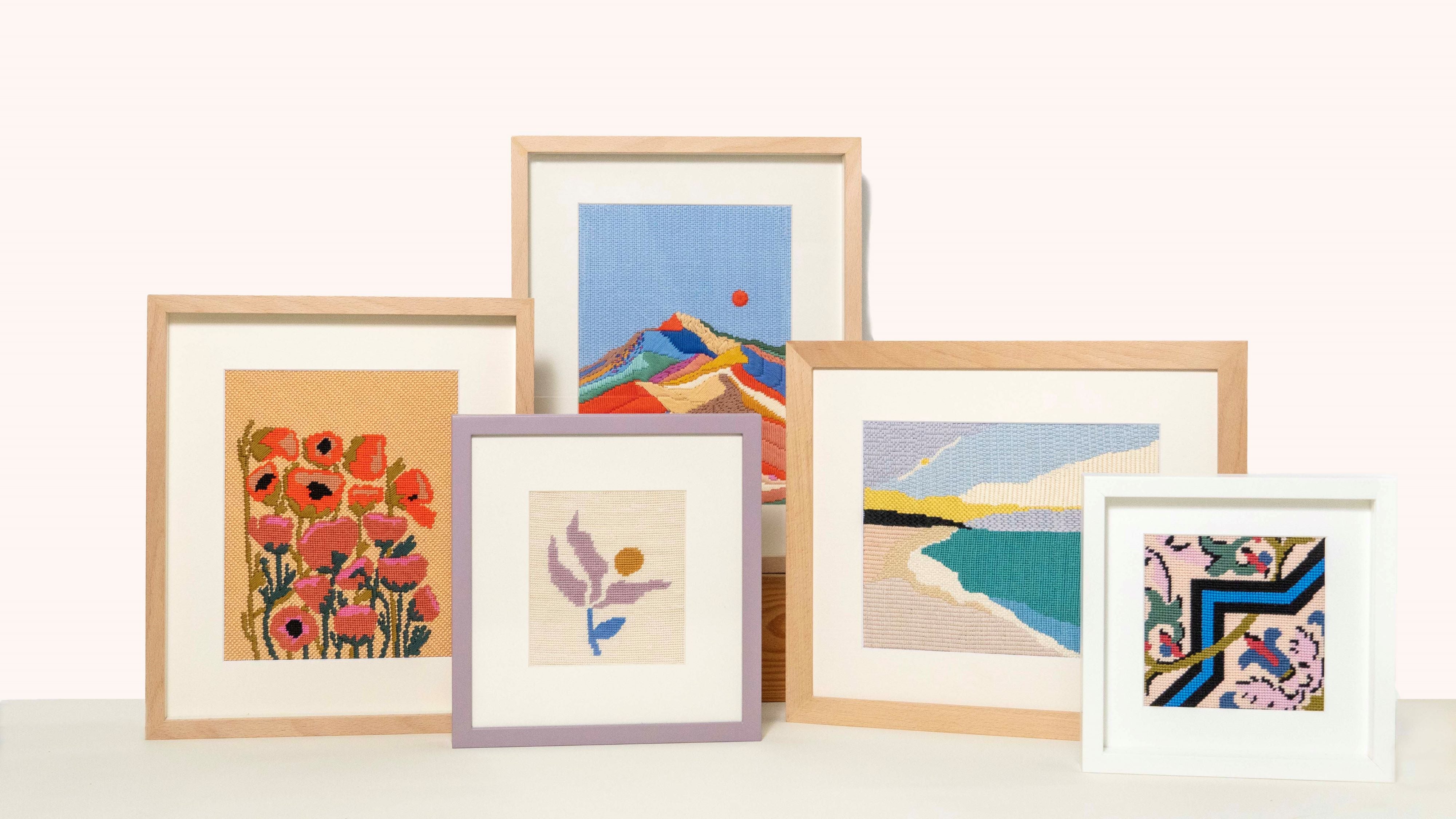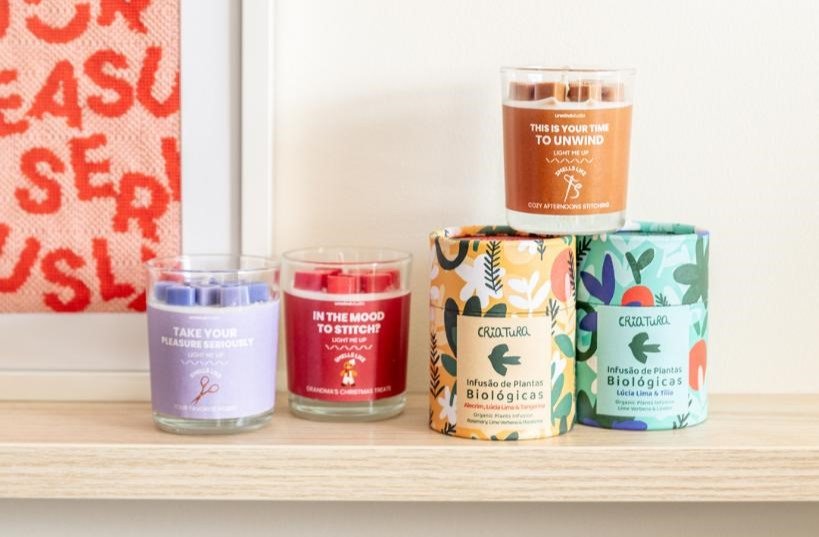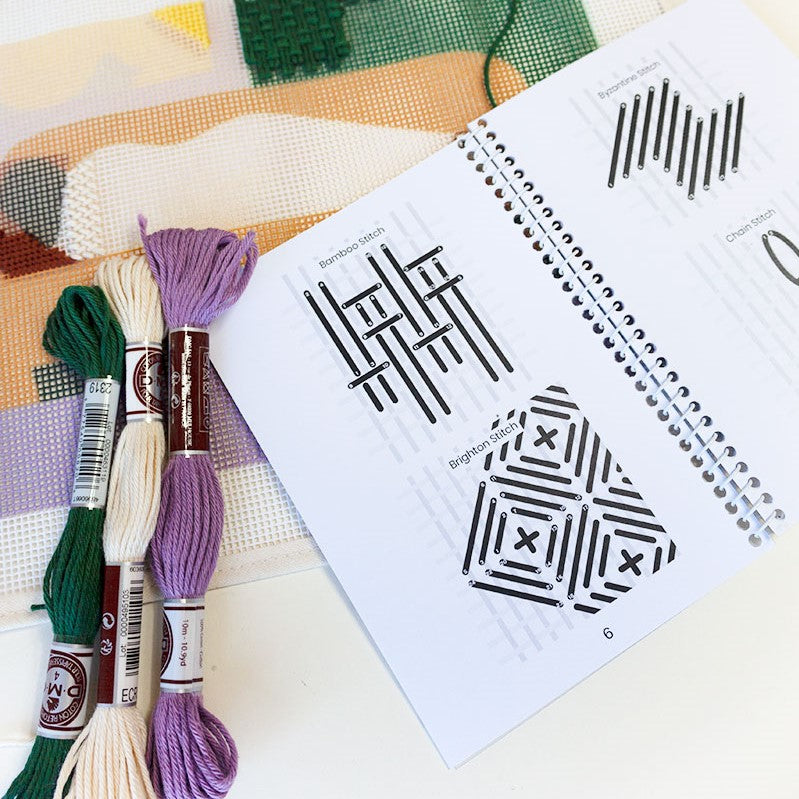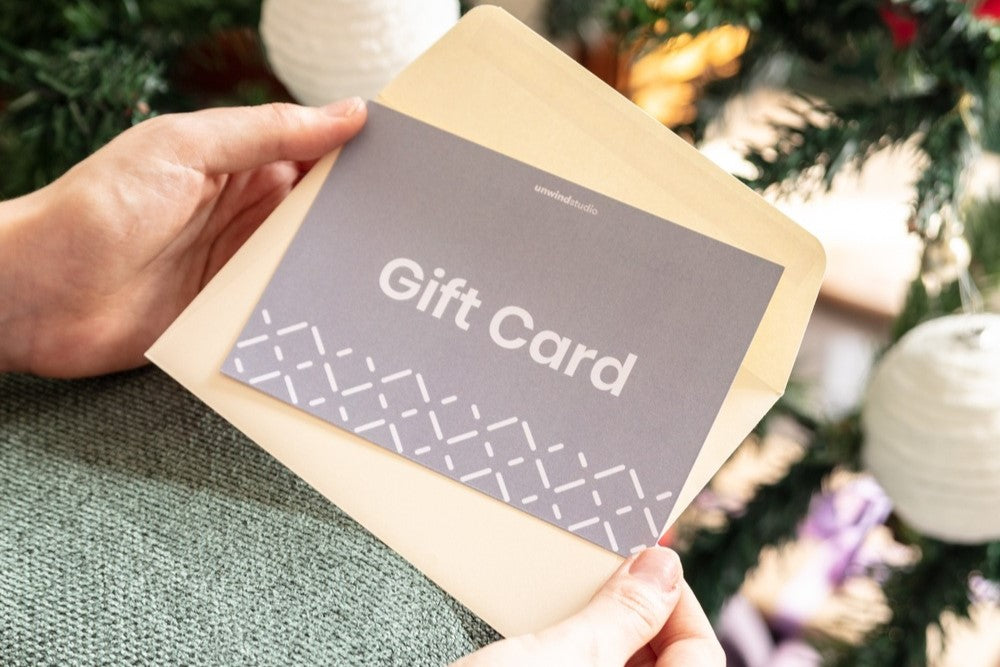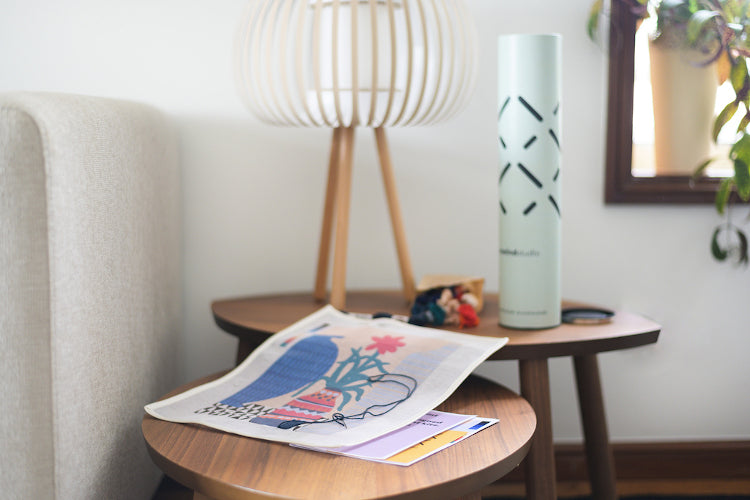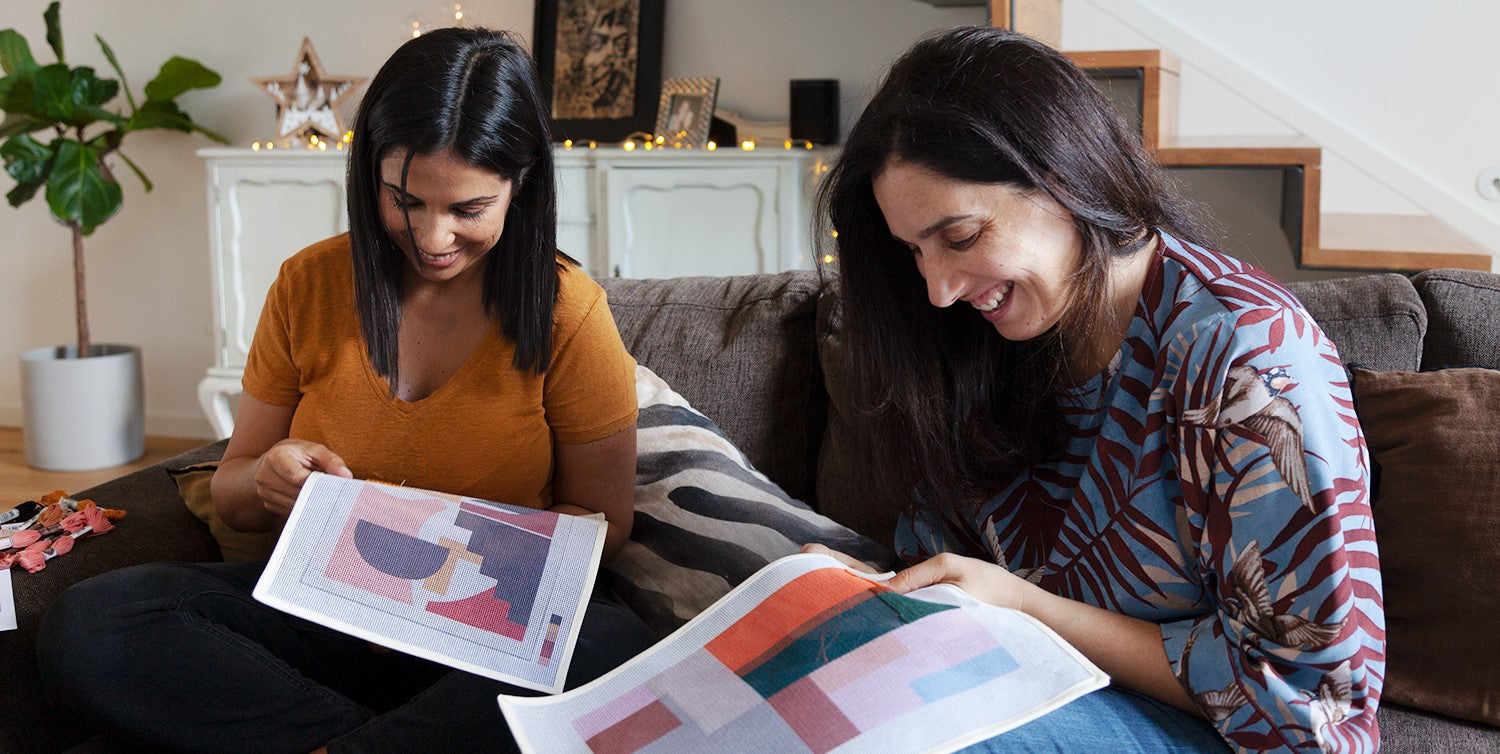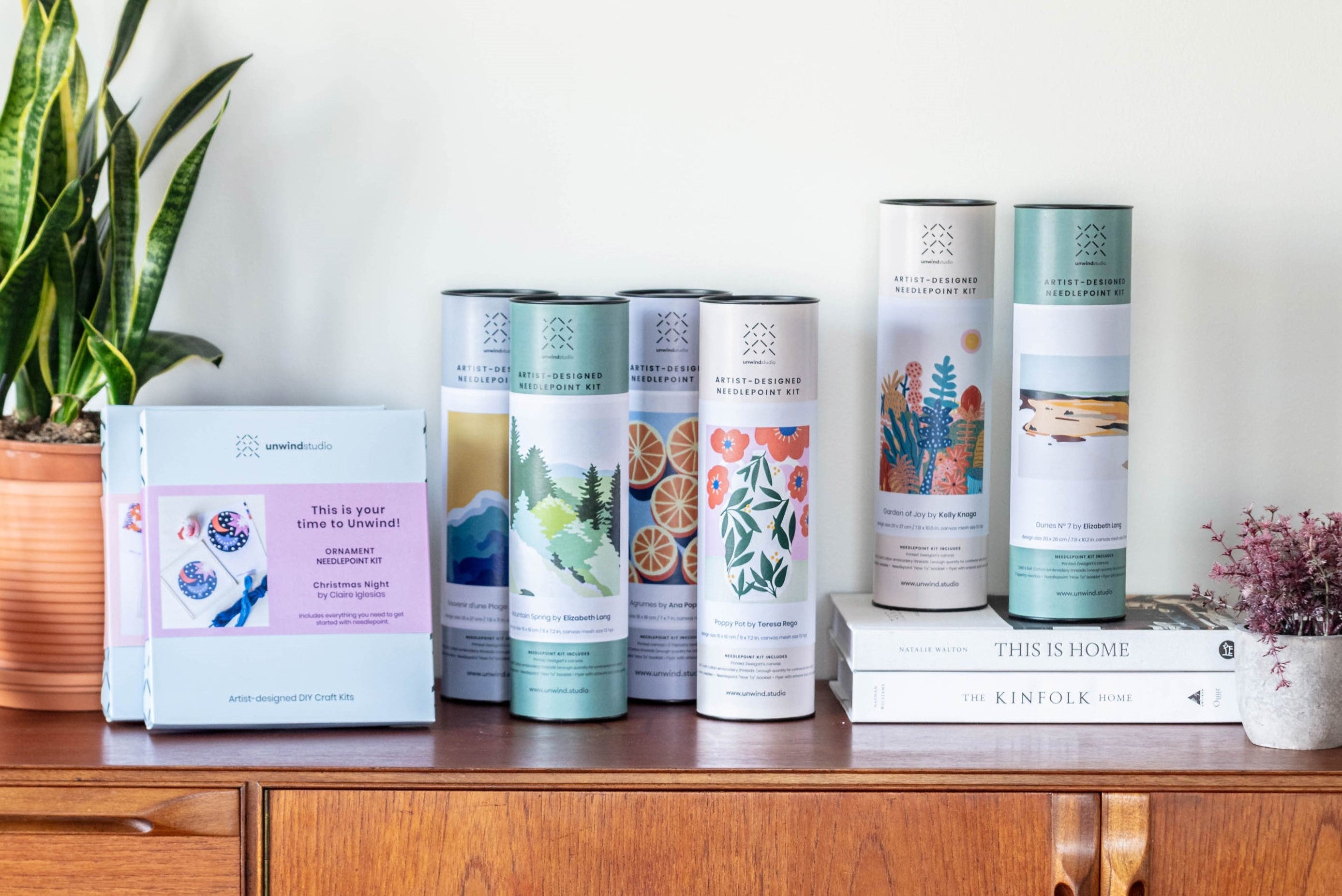Couture 101 pour la finition aux points d'aiguille : un guide pour les débutants
Bienvenue dans notre guide pour débutants sur la couture à la machine ! Si vous avez toujours voulu essayer mais que vous vous sentez intimidé, ce tutoriel pour débutants est fait pour vous. La couture n'est pas aussi difficile qu'il n'y paraît, et c'est une compétence fantastique à avoir pour divers projets, en particulier pour terminer de grands projets de broderie.
Dans cet article de blog, nous vous expliquerons les bases de la couture, en vous donnant toutes les instructions et astuces dont vous avez besoin pour commencer. Une fois que vous vous sentirez en confiance, vous pourrez explorer nos tutoriels spécifiques de finition de broderie pour appliquer ce que vous avez appris.
Avant de plonger, consultez notre didacticiel vidéo détaillé étape par étape pour vous aider à visualiser le processus.
Couture 101 pour la finition au point de croix - Tutoriel vidéo
Matériel nécessaire pour débuter avec une machine à coudre
- Du fil de la même couleur que le tissu que vous allez coudre
- Bobine pour la machine
- Aiguilles pour la machine (taille universelle)
- Épingles/clips (pour aider pendant le processus de couture)
- Machine à coudre : les modèles de base suffisent pour la finition au point de croix
Machines à coudre recommandées pour la finition au point de croix
Dans notre tutoriel vidéo, nous utilisons notre bien-aimée Singer Tradition 2250 , qui est recommandée aux débutants. C'est la première machine que nous avons achetée il y a 5 ans, et elle fonctionne toujours parfaitement pour nos projets de finition !
Nous utilisons actuellement quotidiennement une Singer Heavy Duty pour relier toutes nos toiles avec du tissu en coton (une petite mise à niveau de la machine, pour un travail plus rapide), mais nous avons compté pendant près de 3 ans, en cousant tous les jours de la semaine, uniquement sur notre première machine. À l'époque, la facilité d'utilisation et le coût étaient les principaux critères de sélection de notre machine.
Si vous comptez utiliser la machine à coudre uniquement pour des projets de finition au point de croix, nous vous recommandons vivement d'investir dans une machine à coudre moins chère - moins de 150 € / 150 $ suffisent.
Voici un excellent article de blog qui explique en détail comment trouver les meilleures machines à coudre abordables.
3 raisons pour lesquelles vous devriez investir dans une machine à coudre
1. C'est un investissement moins coûteux , si vous le comparez au coût de l'envoi de votre projet de broderie à des professionnels. Votre premier projet ne sera probablement pas parfait à 100 %, mais vous améliorerez cette compétence au fil du temps et vous pourrez dire fièrement que vous avez tout fait vous-même !
2. Vous apprendrez une nouvelle compétence qui vous permettra d’explorer d’autres métiers textiles / loisirs que vous avez envie d’essayer !
3. Investir dans une machine à coudre est une étape importante vers un mode de vie plus durable. Elle vous permet de réparer et de recycler vos vieux vêtements, réduisant ainsi les déchets et le besoin de nouveaux achats. De plus, coudre ses propres vêtements encourage l'utilisation de matériaux respectueux de l'environnement et soutient la slow fashion, qui privilégie la qualité et l'impact environnemental à la production de masse.
Anatomie d'une machine à coudre de base
Il est important de comprendre plus ou moins comment fonctionne une machine à coudre, nous aborderons les instructions ensuite, mais prenez cette image comme guide pour revenir si vous ne comprenez pas certains termes ou où trouver le mécanisme auquel nous faisons référence.
Instructions détaillées pour commencer à utiliser une machine à coudre
1. Remplissage de la canette
-
Insérer le fil dans la canette :
- Prenez l'extrémité de votre fil et passez-le dans le trou de la bobine, de l'intérieur vers l'extérieur.
- Tenez l’extrémité du fil et enroulez le fil autour de la bobine plusieurs fois pour le fixer.
-
Positionner la bobine :
- Placez la canette à l'emplacement prévu sur la machine à coudre et poussez-la vers la droite pour lui permettre de tourner.
- Suivez les instructions de la machine pour fixer le fil, généralement à l'aide d'une vis ou d'un crochet.
- Appuyez sur la pédale pour transférer le fil vers la bobine, en le tenant doucement pour éviter qu'il ne s'emmêle mais en le laissant tourner librement.
2. Enfilage de l'aiguille
-
Placez le fil sur le porte-bobine :
- Le porte-bobine est généralement situé sur le dessus de la machine.
- Tirez une longueur de fil et suivez les instructions numérotées de la machine ou les repères visuels pour enfiler l'aiguille.
-
Suivez le chemin du fil :
- Tirez le fil à travers le premier crochet, abaissez-le, puis remontez-le.
- Utilisez le volant situé sur le côté droit de la machine pour faire bouger l'aiguille et révéler un crochet argenté en haut.
- Fixez le fil autour de l'hameçon, ramenez-le vers le bas et passez-le dans le dernier hameçon.
-
Enfiler l'aiguille :
- Passez le fil dans le trou de l'aiguille de l'avant vers l'arrière.
- Amenez-le vers vous et passez-le sous le pied presseur.
4. Positionnement de la bobine
-
Insérer la canette :
- Ouvrez la partie inférieure de la machine et retirez le porte-canette.
- Placez la bobine dans le support et tirez le fil à travers la fente latérale jusqu'à ce qu'il s'enclenche.
-
Alignez le porte-bobine :
- Remettez le porte-canette dans son logement en alignant parfaitement le levier.
- Remettez le porte-canette dans son logement en alignant parfaitement le levier.
-
Remonter le fil de la canette :
- Utilisez le volant pour déplacer l'aiguille de haut en bas, en tirant le fil supérieur autour de la canette pour récupérer le fil inférieur.
- Tirez le fil de la canette vers le haut avec des ciseaux et fermez la partie inférieure.
5. Réglages de la machine à coudre
-
Sélectionnez le type de point :
- Utilisez le système de réglage pour choisir un point de base, qui est le plus souvent utilisé pour les projets de broderie au point de croix.
- Utilisez le système de réglage pour choisir un point de base, qui est le plus souvent utilisé pour les projets de broderie au point de croix.
-
Régler la longueur du point :
- Ajustez la longueur du point entre 3 et 4, ce qui convient à la plupart des projets de broderie.
- Ajustez la longueur du point entre 3 et 4, ce qui convient à la plupart des projets de broderie.
-
Ajuster la tension :
- Réglez le cadran de contrôle de tension sur 8, un réglage qui fonctionne bien pour les projets simples.
6. Commencez à coudre
Très important : assurez-vous que le levier du pied-de-biche est abaissé lors de la couture pour maintenir le tissu en place.
-
Positionnez votre tissu :
- Placez votre toile à broder sous le pied-de-biche et guidez-la avec votre main pour maintenir une ligne droite.
-
Commencer à coudre :
- Appuyez lentement sur la pédale, en ajustant votre vitesse selon vos besoins.
- Continuez à coudre jusqu’à atteindre un coin, puis soulevez le levier du pied-de-biche, tournez le tissu et abaissez le levier pour continuer.
-
Fixez les points :
- À la fin de votre couture, appuyez sur le levier de marche arrière pour bloquer les points.
- Soulevez l’aiguille, retirez le tissu et coupez le fil à l’aide du coupe-fil ou des ciseaux.
Conclusion
Félicitations ! Vous avez terminé votre premier projet de couture. N'oubliez pas que la perfection n'est pas le but, c'est la pratique et l'amélioration qui comptent. Grâce à ces compétences de base, vous êtes prêt à vous attaquer à divers projets de finition de broderie avec une machine à coudre.
Découvrez nos autres tutoriels de finition pour des guides plus détaillés sur la façon de créer différents projets de broderie.
Bonne couture !!


